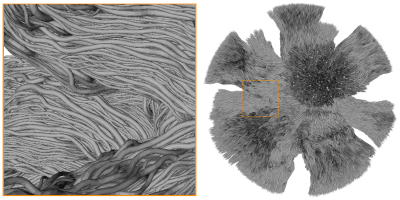Gabriel Girard1,2,3, Jonathan Rafael-Patino3, Raphael Truffet4, Marco Pizzolato3,5, Emmanuel Caruyer4, and Jean-Philippe Thiran1,2,3
1University Hospital Center (CHUV) and University of Lausanne (UNIL), Lausanne, Switzerland, 2CIBM Center for BioMedical Imaging, Lausanne, Switzerland, 3Swiss Federal Institute of Technology Lausanne (EPFL), Lausanne, Switzerland, 4Univ Rennes, Inria, CNRS, Inserm, IRISA UMR 6074, Empenn ERL U-1228, Rennes, France, 5Technical University of Denmark, Kongens Lyngby, Denmark
1University Hospital Center (CHUV) and University of Lausanne (UNIL), Lausanne, Switzerland, 2CIBM Center for BioMedical Imaging, Lausanne, Switzerland, 3Swiss Federal Institute of Technology Lausanne (EPFL), Lausanne, Switzerland, 4Univ Rennes, Inria, CNRS, Inserm, IRISA UMR 6074, Empenn ERL U-1228, Rennes, France, 5Technical University of Denmark, Kongens Lyngby, Denmark
We propose a novel in silico phantom designed as a tool to foster methodological development of structural connectivity from diffusion-weighted DW-MRI. The dataset, with both microstructure and macrostructure complexity, was obtained using Monte-Carlo simulations of spins dynamics.

Figure 1. Mesh of the substrate used for the Monte-Carlo simulations of spins dynamics to generate the DiSCo DW-MRI dataset. The mesh is composed of 12,196 tubular fibers, with gamma-distributed outer diameters ranging from 2um to 6um, connecting 16 ROIs. The 16 ROIs were placed on the surface of a sphere of 1mm in diameter.

Figure 2. Three dimensional (left) and cross-sectional (middle) views of the trajectories of the 12,196 tubular fibers. Trajectories sharing both endpoints are shown with the same color. They were used to compute the ground truth connectivity matrix (right), with weights corresponding to the sum of the cross-sectional area of the tubular fibers connecting each pair of ROIs.
